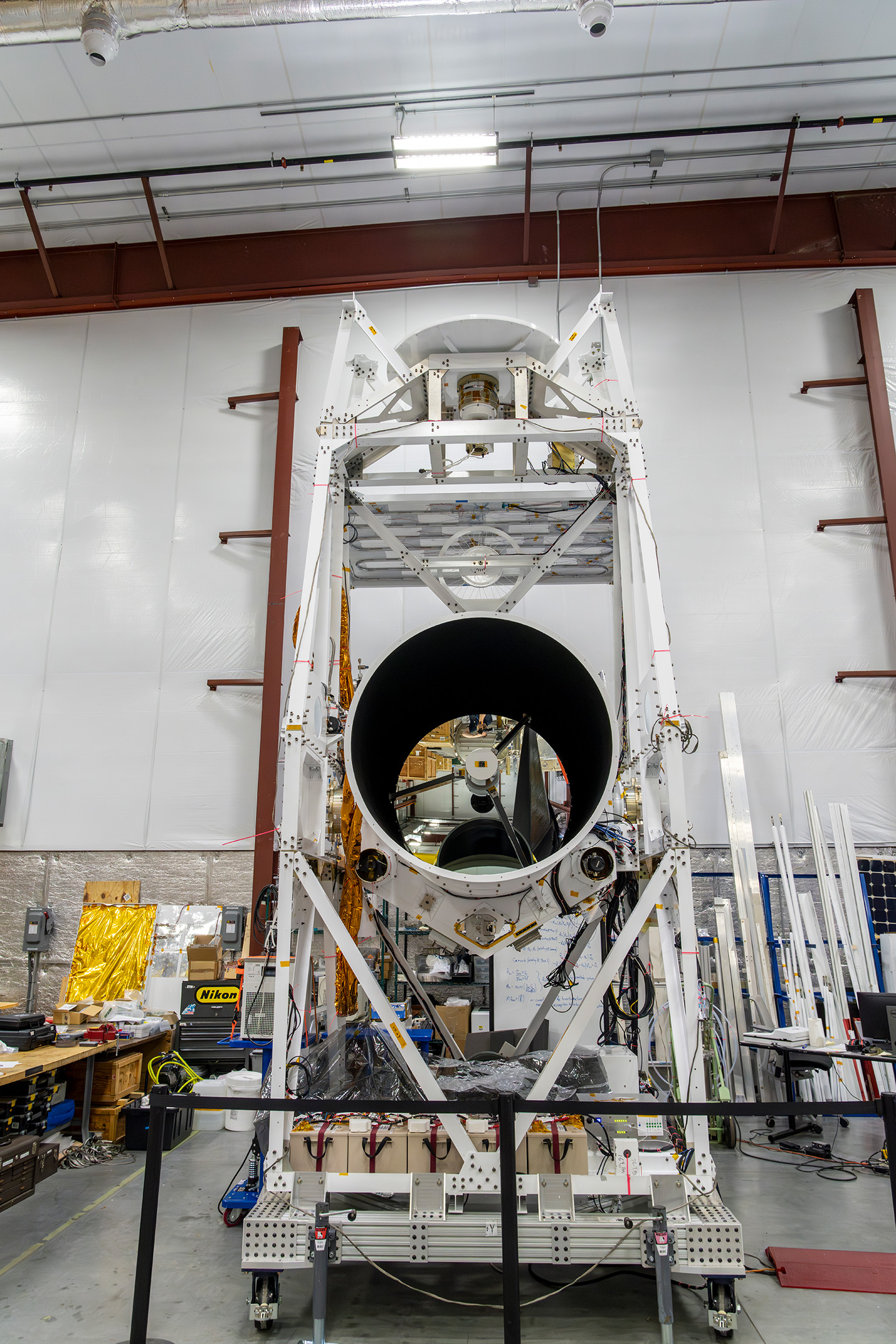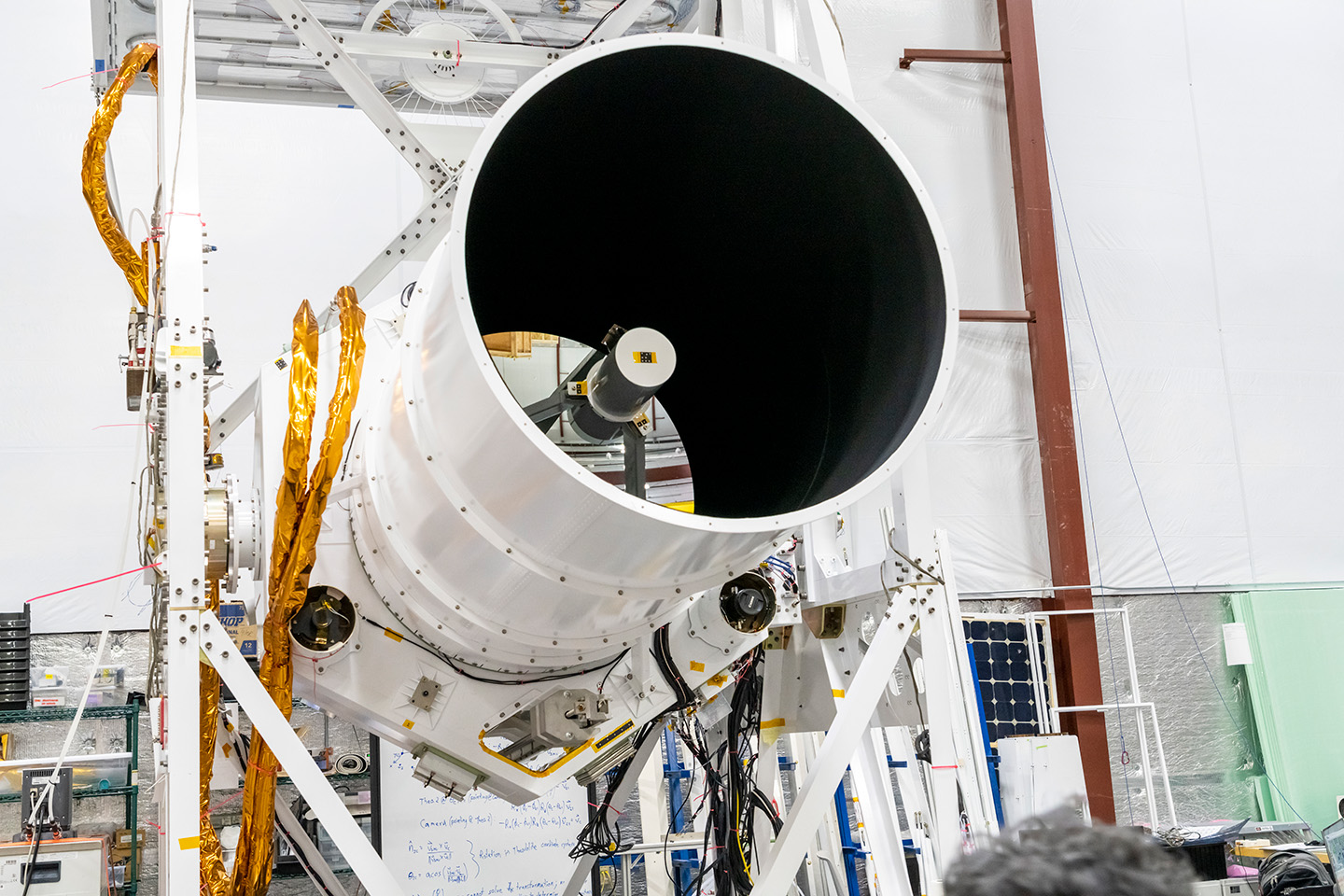Where balloons have carried people across the skies for hundreds of years, the stratospheric balloon missions shaped at Johns Hopkins APL over the past three decades are lifting high-tech telescopes to the very edge of space, enabling amazing discoveries in heliophysics, astrophysics and planetary and Earth science. With balloons the size of a football field carrying APL-developed gondolas taller than two stories, these systems provide a fast, flexible and resourceful way to explore space without leaving Earth.
On July 3, the integrated gondola and payload for NASA’s Galactic/Extragalactic ULDB Spectroscopic Terahertz Observatory (GUSTO) was shipped from the Johns Hopkins Applied Physics Laboratory (APL) in Laurel, Maryland, on a long route to Antarctica.

GUSTO is an observatory that will fly on a Long-Duration Balloon (LDB) to around 120,000 feet in the air to study the interstellar medium — the matter between the stars — using far-infrared detectors. This mission represents a joint effort between NASA, the University of Arizona and Johns Hopkins APL.
The gondola carrying the payload was designed and built at APL by a team of Space Exploration Sector (SES) and Research and Exploratory Development Department (REDD) staff members. Kieran Hegarty, the GUSTO program manager from SES, noted that the seven-year-old mission was long in coming, after the pandemic and technical issues delayed the launch by several years.
“It’s a big relief to be shipping it off,” Hegarty said. “During COVID, the work at APL never stopped. Even during peak COVID, we had folks on site, which took a lot of coordination and effort by the team who still, in the face of global uncertainty, came in and pushed the hardware forward.”
The payload is a telescope that was developed by mission partners at the University of Arizona, which is also the principal investigator institution. It was shipped to APL in March 2023 for integration with the gondola, and now the integrated observatory is en route from APL to the NASA Columbia Scientific Balloon Facility in Palestine, Texas. There, the observatory will be integrated with NASA-provided antenna equipment before being flown first to New Zealand and then on to McMurdo Station in Antarctica, operated by the National Science Foundation’s United States Antarctic Program.

Six members of the APL mission team and six members of the University of Arizona mission team will also travel to Antarctica before the launch date in December. While at the NASA Long Duration Balloon Camp, near McMurdo Station, the team will ready the observatory for launch by installing NASA equipment and APL-built solar arrays, and performing final pre-launch testing.
SES Civil Space Mission Area Executive Jason Kalirai noted that GUSTO is unique compared to most NASA balloon payloads, in part because it is a full-blown science mission. “GUSTO is delivering high-impact science at a very low cost compared to spaceflight missions,” he said.
Once in the air, the data collected by the observatory will be transmitted back to the team at the University of Arizona science operations center. The team will then develop the data product and provide it to the rest of the community. APL will monitor the health and status of the observatory during mission operations.
“I think what I’m most looking forward to is getting that science data back,” Hegarty said. “Not only to unravel these mysteries about the interstellar medium but also to show that the data was returned because of the great work the GUSTO team did getting to this point.”
Related Topics
For Media Inquiries
For all media inquiries, including permission to use images or video in our gallery, please contact:
Michael Buckley
All Media Resources

